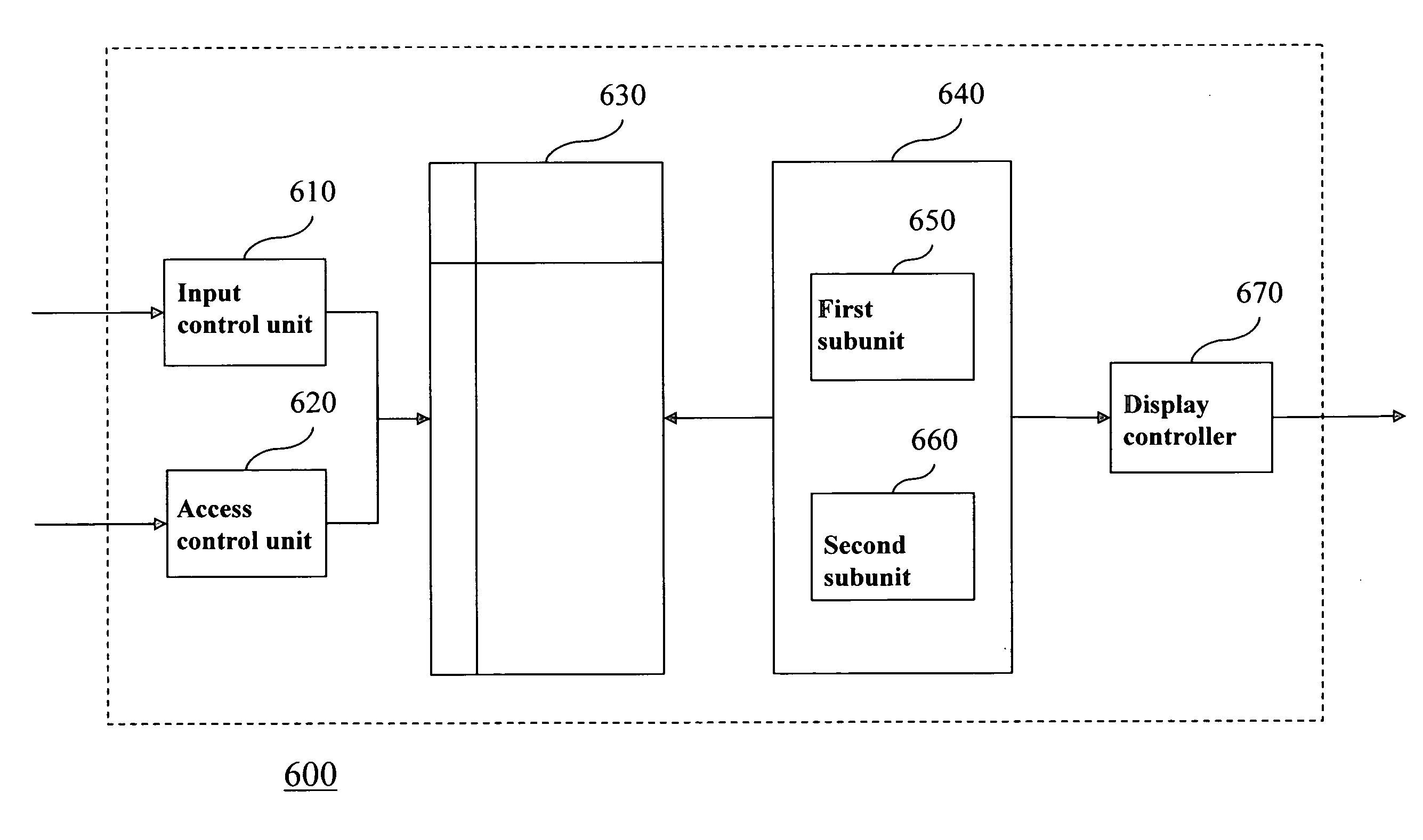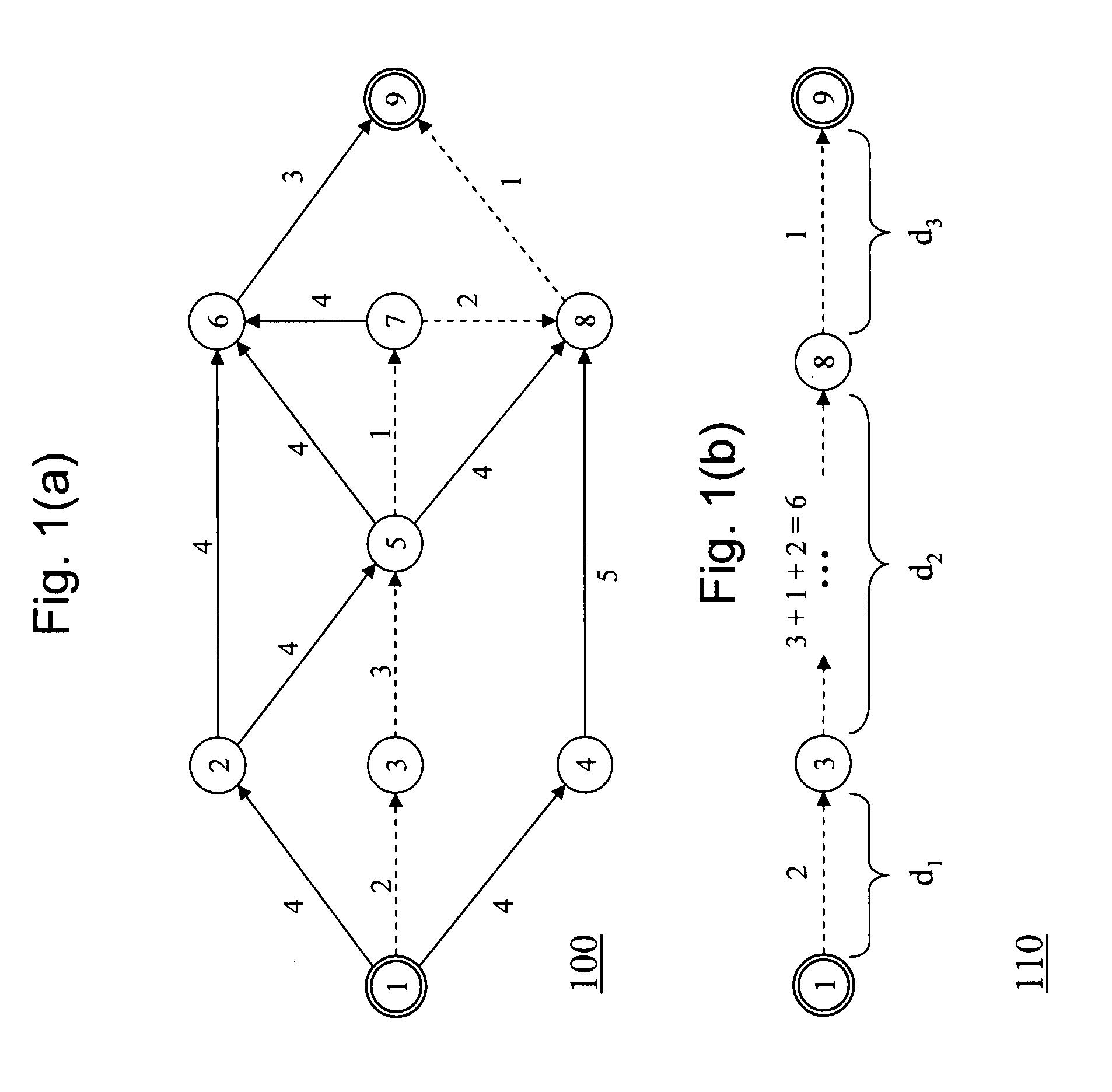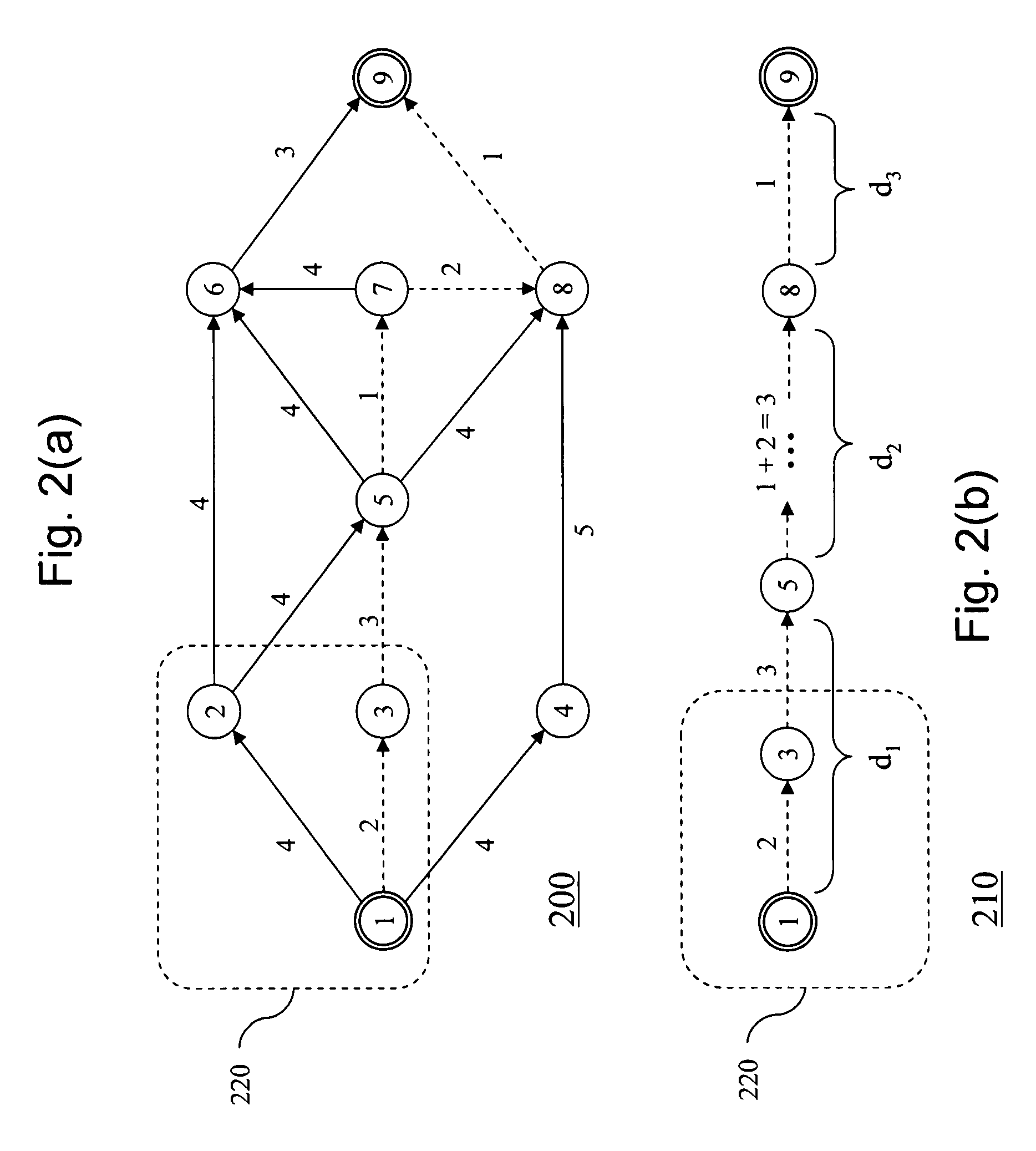Method and device for determining the length of a shortest path in a network
- Summary
- Abstract
- Description
- Claims
- Application Information
AI Technical Summary
Benefits of technology
Problems solved by technology
Method used
Image
Examples
Embodiment Construction
[0037]FIG. 1a shows a schematic representation of a road network 100. The network has nodes 1 through 9, wherein node 1 will be called the source node and node 9 will be called the target node in the following. Each edge in the network is assigned a positive weight, e.g. a distance or travel time.
[0038]The shortest path from source node 1 to target node 9, i.e. the path having minimal combined weight, is indicated by the dotted line and runs through nodes 3, 5, 7 and node 8. The overall length may be obtained by forming the sum of the weights along the shortest path.
[0039]According to the invention, one or several the nodes on the shortest path may now be used for pre-computing and storing information about that shortest path for later use.
[0040]In particular, given the example of FIG. 1a, it may be observed that, knowing the length of the shortest path from the source node 1 to one node, e.g. node 3, and the length of the shortest path from this node, i.e. node 3 in the present exa...
PUM
 Login to View More
Login to View More Abstract
Description
Claims
Application Information
 Login to View More
Login to View More - R&D
- Intellectual Property
- Life Sciences
- Materials
- Tech Scout
- Unparalleled Data Quality
- Higher Quality Content
- 60% Fewer Hallucinations
Browse by: Latest US Patents, China's latest patents, Technical Efficacy Thesaurus, Application Domain, Technology Topic, Popular Technical Reports.
© 2025 PatSnap. All rights reserved.Legal|Privacy policy|Modern Slavery Act Transparency Statement|Sitemap|About US| Contact US: help@patsnap.com



